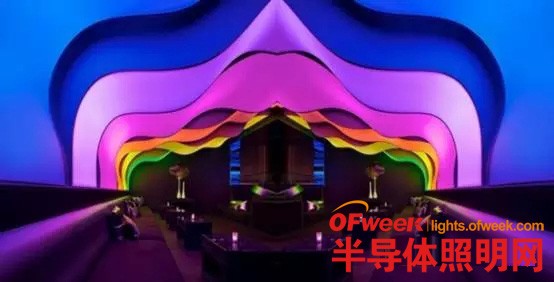In recent years, the application of electric light source technology in the field of plant lighting has become more and more extensive. In particular, LED has obvious advantages in plant lighting because of its high luminous efficiency, low heat generation, small size and long life. With the rapid development of plant lighting, accurate and objective evaluation of lighting products and the scene lighting environment are getting more and more attention, it is necessary to consider the evaluation of plant lighting from two points, one is the healthy growth of plants, and the other is full energy-saving lighting. .
1. Key factors of plant lighting
Light is one of the most important environmental factors for plant growth and development. Plant growth requires the conversion of light energy into the energy needed for its own growth through photosynthesis. Different plants have different light requirements, and the required light is needed. The light sources are also different. The following are mainly analyzed from the aspects of light quality, optical density and light uniformity.
1.1 Light quality
Studies have shown that chlorophyll, which determines plant photosynthesis, is sensitive to blue and red light, with peak wavelengths around 450 nm and 630 nm, respectively, while other colors of light also significantly affect plant growth. For example, bacterial chlorophyll also requires UV and IR. Visible light acts on plant morphology.

As shown in Figure 1, plant growth depends on the common photosynthesis of various chlorophyll and other pigments in the body. McCree used a large number of literature research in 1972, based on 22 plants, given the plant relative quantum efficiency curve (RQE) in the plant photometric system. Medium, the common spectral response curve shown in Figure 1. In fact, for different plants, as well as the absorption spectrum of different growth stages of the same plant, it is necessary to determine the spectral range and peak wavelength of the selected combination plant illumination source. The spectrum of plant illumination can be obtained through laboratory measurements or on the illumination site. Conduct monitoring and evaluation.
1.2 Optical density
Plants have an upper limit on the optical density requirement, that is, the light saturation point. When the optical density reaches the light saturation point of the plant, the photosynthesis of the plant reaches a peak, and when the optical density continues to increase beyond the light saturation point of the plant, the photosynthesis of the plant The effect will not only increase, but will decrease, and the plant itself will produce light suppression. Plants can be divided into hi-light plants, shade-tolerant plants, and neutral plants depending on the degree of influence of the optical density on the plants. These plants all require a suitable optical density to grow well. The optical density corresponds to irradiance or photon flux density (PPFD). At the site of plant lighting, real-time monitoring can be used to assess whether the optical density meets plant growth requirements. In the design of plant lighting, the spatial light intensity distribution data of the lighting fixture can be used for evaluation.
1.3 Light uniformity
Since plants are photosynthetic autotrophs that cannot be moved, LED illumination has strong directionality, and there may be uneven spatial light color distribution. If the light uniformity in the plant growth environment is not designed, the illumination system will be made. Plants in different locations receive different light qualities and light intensities, which tend to form differences in individual size, growth rate, and photosynthetic yield of the same plant. Therefore, the uniformity of light must be considered when designing the illumination system, and the arrangement of the light sources is set by the light color characteristics of the selected light source. According to the CSA (National Semiconductor Lighting Engineering R&D and Industry Alliance Standards) recently published "Performance Requirements for LED Panel Lights for Plant Growth", the evaluation of light uniformity of plant lighting products includes two aspects: uniformity of irradiance and inconsistency of radiation spectrum Uλ.
The TV Mobile Stand series includes many types of TV stand which are widely use for large size (70~120") TVs, it with firm struction and loading weight up to 660 pounds, the slim new type Tv Mobile Stand passed UL approval yet.
TV Mobile Stand
Rolling Tv Stand,Tv Mobile Stand,Heavy Duty Rolling Tv Stand,Mobile Tv Stand With Wheels
Foshan Dinghan Electrical Technology Co., Ltd , https://www.dinghanelectrical.com